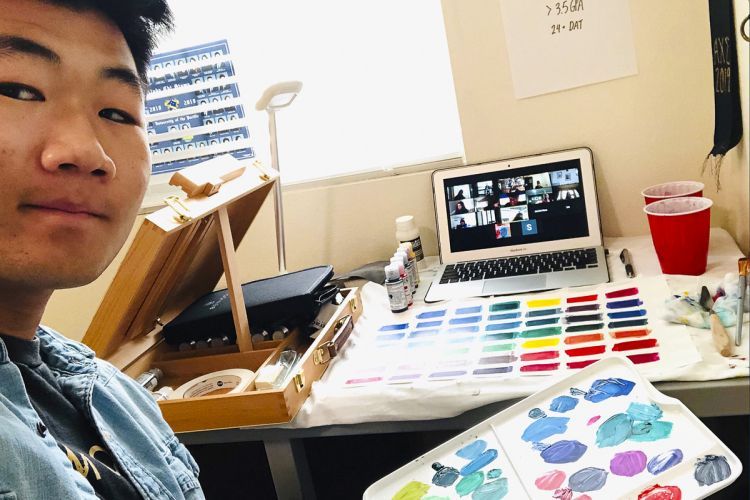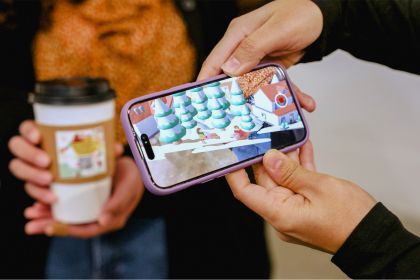Breadcrumb
How Go-Pros, lab simulators and art supplies are keeping Pacific students engaged this fall

This year, the Pacific community has faced myriad challenges brought on by COVID-19. Our faculty and students, particularly, have had to adapt to a new approach to education. And while online learning can never replace the experience of being together, professors and students have risen to the moment and demonstrated the adaptability a liberal arts education promotes.
Professors were determined to make the fall as rich and rewarding an experience for students as possible. Through hard work, creativity and the support of generous donors, they have made sure students have what they need to succeed.
Shipping tools for creativity
Art, Media, Performance and Design (AMPD) faculty and staff boxed and shipped paint supplies, camera equipment and laptops to students’ homes. The department more than doubled its camera inventory to fill students’ needs.
In addition, 275 Adobe Creative Cloud licenses were purchased for Media X, art and communication students so they can create graphic designs, touch up photos and edit video.
"So much of what we do in art and Media X is hands-on—learning by doing. Students can't learn if they don't have supplies and equipment,” said Professor Zélie, chair of the Department of Art, Media, Performance and Design. “That's why we wanted to give students as much as we could in terms of access to tools, computers, software and supplies. In many cases this meant packing up camera kits and shipping them."
Chemistry lab simulations
One of the biggest concerns for returning students was how science labs would run. About 700 students take courses in chemistry alone. Fortunately, the Department of Chemistry had some labs with graduate and undergraduate students that were active over the summer, so faculty used that experience to inform their decisions about the fall.
“It allowed us to learn a lot about how to put this into a virtual landscape,” said chemistry graduate student and teaching assistant Cate Simmermaker. “And now we're kind of refining that and making additions, but also working on some of the things that were really successful.”
The department purchased licenses for a lab simulator called Labster. Similar to a first-person video game, the program simulates a real lab experience for students and leaves nothing out, including using safety gear and even putting on a lab coat.
Teaching assistants have also used Go-Pro cameras to produce videos of experiments for students to follow. In some cases, the experiment is recorded and the students simply watch the reactions and make conclusions. An added benefit to that approach is that it eliminates errors in the experiment itself, something the students like.
“I’ve already heard from students, ‘Oh, I cannot mess up my experiment. My data will make sense, and for sure, I'm seeing what I'm supposed to see,” said teaching assistant Peter Weidner.
Political science makes use of new technology
Professors in seminar and lecture-based classes faced challenges as well. How do you keep students engaged in classes when they’re connected only by screens?
Political science professor Keith Smith has worked with Pacific’s Center for Teaching and Learning to develop strategies to help him pivot his classes to remote teaching. His philosophy emphasizes interacting with other students and the material instead of the read-a-book, take-a-test model that many online courses rely on.
“In order to truly learn something, you have to be able to talk about it; you have to be able to write about it; you have to reflect on it,” he said. “You have to come back to the idea multiple times so that you can see the different pieces, and we do that in our seminars.”
In his Pacific Seminar I courses, Smith is using tool called Flipgrid, which allows his Reacting to the Past students to record speeches that classmates can watch outside of class. That frees more time for class discussion.
They will also use collaborative documents in breakout rooms on Zoom as well as other digital tools. But for Smith, it’s the interaction that matters.
“The challenge is to use the tools that are out there without having the tools be the point,” he said.





